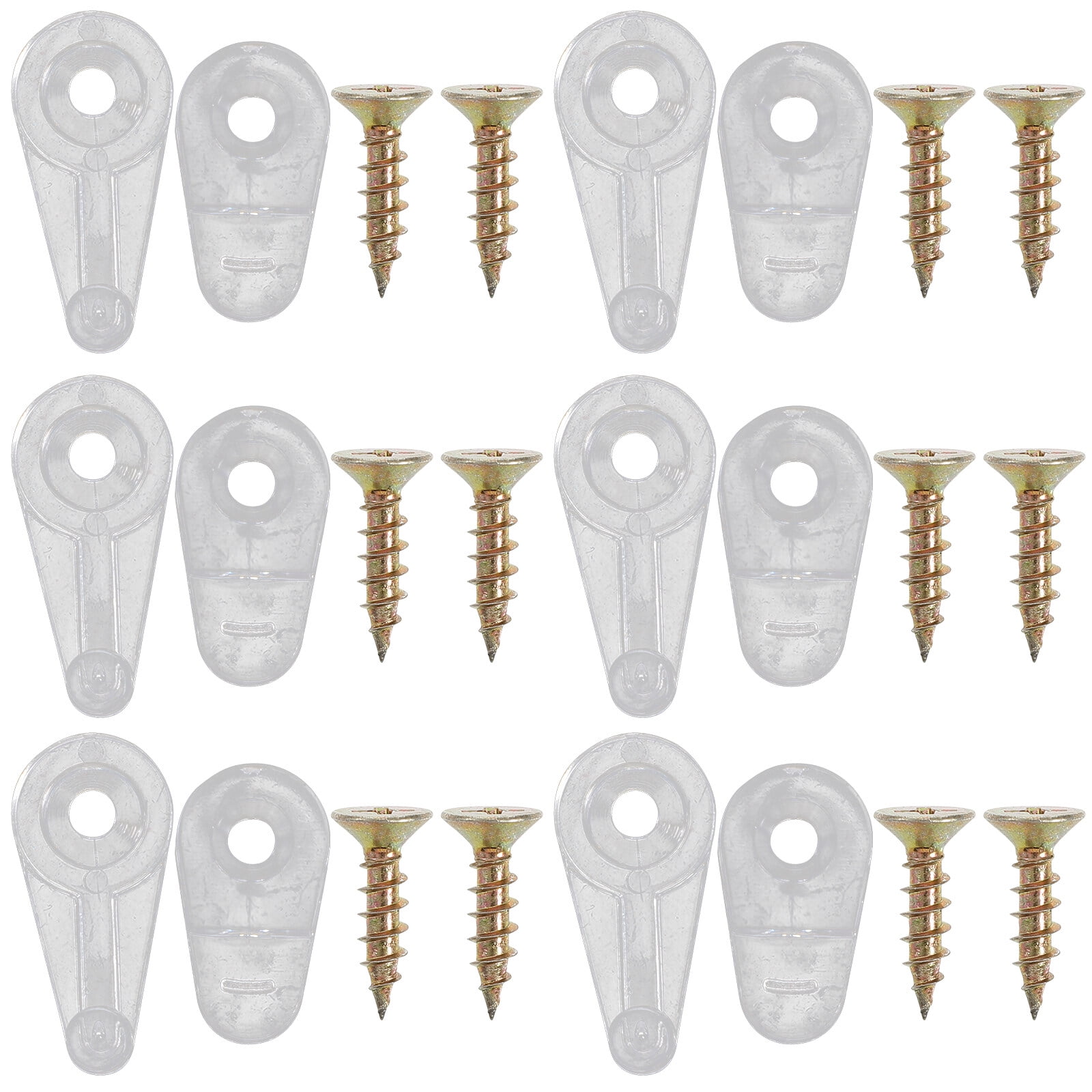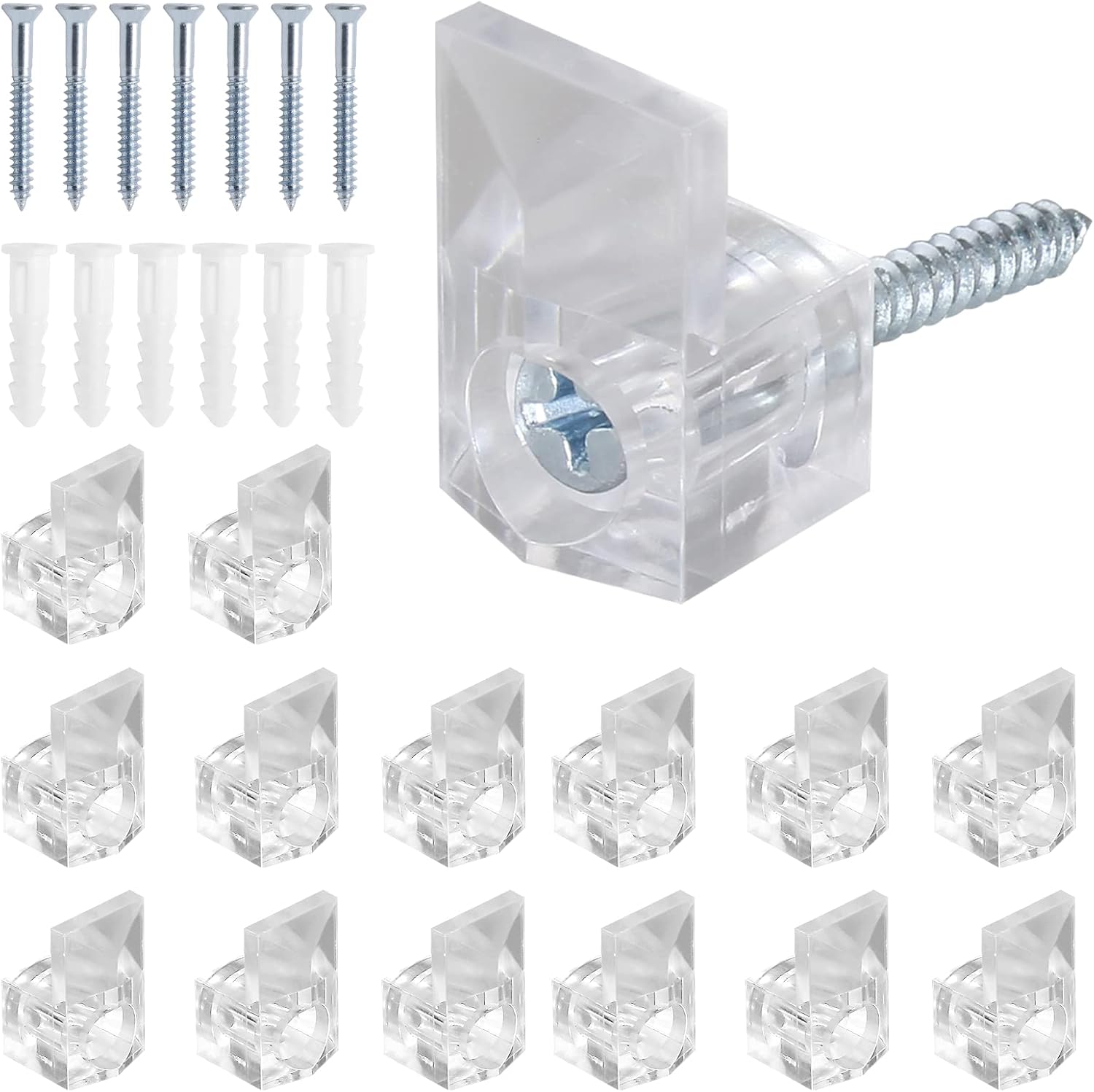Cabinet Glass Retainer Clips: Cabinet Glass Retainer Clips Plastic

Cabinet glass retainer clips are small, often inconspicuous, yet essential components that hold glass shelves securely in place within cabinets. They are typically made of plastic or metal and are designed to provide a secure and aesthetically pleasing finish to your cabinet interiors. These clips are commonly used in kitchens, bathrooms, and other areas where glass shelves are utilized.
Purpose and Function of Cabinet Glass Retainer Clips, Cabinet glass retainer clips plastic
Cabinet glass retainer clips play a crucial role in ensuring the stability and safety of glass shelves within cabinets. Their primary function is to hold the glass shelf firmly in place, preventing it from sliding, tilting, or falling. They are designed to distribute weight evenly across the shelf, minimizing stress points and potential breakage. These clips typically attach to the sides of the cabinet and engage with the edges of the glass shelf, providing a secure grip.
Materials Used in Manufacturing Cabinet Glass Retainer Clips
Cabinet glass retainer clips are manufactured from a variety of materials, each offering unique advantages and disadvantages:
Plastic Cabinet Glass Retainer Clips
- Advantages: Plastic clips are typically more affordable, lightweight, and resistant to corrosion. They come in a variety of colors to match your cabinet interiors.
- Disadvantages: Plastic clips may not be as durable as metal clips, especially under heavy loads. They can also be susceptible to wear and tear over time, potentially leading to breakage.
Metal Cabinet Glass Retainer Clips
- Advantages: Metal clips are generally more durable and robust than plastic clips, making them suitable for heavier loads. They are also less prone to wear and tear.
- Disadvantages: Metal clips can be more expensive than plastic clips and may require more careful handling to prevent scratches or damage to the glass.
Installation and Removal of Cabinet Glass Retainer Clips
Installation
- Locate the clip positions: Identify the designated locations for the clips on the cabinet sides. These are typically marked with holes or grooves.
- Insert the clips: Gently push the clips into the designated positions on the cabinet sides. Ensure they are securely in place.
- Place the glass shelf: Carefully position the glass shelf onto the clips, ensuring it rests evenly and securely.
Removal
- Gently lift the glass shelf: Carefully lift the glass shelf, ensuring it is clear of the clips.
- Remove the clips: Once the shelf is removed, gently pry the clips out of their positions on the cabinet sides. Use a small flat-head screwdriver or a similar tool if needed.
Safety Precautions
- Always wear protective gloves and eyewear when handling glass shelves and clips.
- Be careful not to drop the glass shelf or clips, as this could result in breakage or injury.
- Avoid applying excessive force when installing or removing clips, as this could damage the clips or the cabinet.
Types of Cabinet Glass Retainer Clips

Cabinet glass retainer clips are essential components for securing glass shelves in cabinets, providing both stability and a sleek, modern aesthetic. These clips come in various designs, sizes, and materials, each suited for different cabinet styles, glass thicknesses, and applications.
Types of Cabinet Glass Retainer Clips
The different types of cabinet glass retainer clips are categorized based on their design, size, and application.
- Standard Clips: These are the most common type of clip, typically made from metal or plastic. They feature a simple design with two prongs that secure the glass shelf in place. Standard clips are suitable for various cabinet styles and glass thicknesses, making them a versatile option. They are commonly used in kitchen cabinets, bathroom cabinets, and other home applications.
- Concealed Clips: These clips are designed to be hidden from view, creating a seamless and minimalist look. They are often used in contemporary cabinets where aesthetics are paramount. Concealed clips are typically made from metal and are available in various finishes to match the cabinet hardware. They are often used with thicker glass shelves to ensure stability.
- Adjustable Clips: These clips offer the flexibility to accommodate different glass thicknesses. They feature a mechanism that allows the prongs to be adjusted to securely hold the glass shelf in place. Adjustable clips are ideal for cabinets with varying glass shelf thicknesses, providing a convenient solution for customizing the display.
- Corner Clips: These clips are specifically designed for securing glass shelves at corners. They provide a secure and stable hold, preventing the glass shelf from shifting or moving. Corner clips are commonly used in cabinets with angled shelves or where additional support is needed.
- Heavy-Duty Clips: These clips are designed for heavy-duty applications, such as cabinets used in commercial settings. They are typically made from durable materials, such as stainless steel, and are capable of supporting heavier glass shelves. Heavy-duty clips are also suitable for use in outdoor cabinets, where they can withstand harsh weather conditions.
Choosing the Right Cabinet Glass Retainer Clips

Selecting the appropriate cabinet glass retainer clips is crucial for ensuring a secure and aesthetically pleasing installation. These clips play a vital role in holding the glass securely in place, preventing it from shifting or falling out. Choosing the right clips involves considering several factors, such as cabinet style, glass thickness, and desired aesthetic.
Factors to Consider When Choosing Cabinet Glass Retainer Clips
The following factors play a crucial role in selecting the appropriate cabinet glass retainer clips:
- Cabinet Style: The style of your cabinet, whether traditional, modern, or contemporary, can influence the choice of clips. For example, traditional cabinets might call for ornate or decorative clips, while modern cabinets might benefit from minimalist and sleek clips.
- Glass Thickness: The thickness of the glass is a key factor in determining the appropriate clip size. Thicker glass requires larger and sturdier clips to ensure secure support.
- Desired Aesthetic: The desired aesthetic plays a role in choosing the clip’s material, finish, and design. For example, if you prefer a more subtle look, you might opt for clips that blend seamlessly with the cabinet’s finish.
Determining the Appropriate Clip Size and Type
To determine the appropriate clip size and type, follow these steps:
- Measure the Glass Thickness: Use a ruler or caliper to accurately measure the thickness of your glass. This measurement is crucial for selecting the right clip size.
- Consider the Cabinet Style: Choose clips that complement the style of your cabinet. If your cabinet has a traditional design, opt for decorative or ornate clips. For modern cabinets, minimalist and sleek clips are more appropriate.
- Choose the Desired Aesthetic: Select clips that align with your desired aesthetic. For example, if you want a subtle look, choose clips that blend with the cabinet’s finish. If you prefer a more prominent look, you might opt for clips with a contrasting finish.
- Select the Appropriate Clip Type: There are various types of clips available, including spring clips, push-in clips, and adjustable clips. The type of clip you choose depends on the glass thickness, cabinet style, and desired aesthetic.
Decision-Making Process Flowchart
The following flowchart summarizes the decision-making process for choosing the right clips:
[Image: A flowchart illustrating the decision-making process for choosing the right clips. The flowchart should start with “Measure Glass Thickness” and branch out to different options based on the thickness, cabinet style, and desired aesthetic. The flowchart should end with the selection of the appropriate clip type.]
